Which teams will be the most aggressive when the free-agency market opens?
NFL Nation reporters assess how active all 32 teams will be when the new league year kicks off on March 14, based on the following scale:
Let's start with the teams that will be the most active:
1: Aggressive

Cleveland Browns
The Browns have the most salary-cap space in the league at an estimated $110 million. Former general manager Sashi Brown built that war chest while planning to start using it this offseason. New general manager John Dorsey benefits. Dorsey has said the Browns will be prudent in their spending, but they've made that claim before and have gone on to spend like parents of twins at Christmas. The Browns are coming off an 0-16 season and need receivers, a cornerback and overall talent up and down the roster. This is not the offseason to sit idle. -- Pat McManamon

Denver Broncos
These are uncharted waters for even the most experienced of John Elway watchers. The Broncos are coming off a 5-11 season, the worst finish in Elway's tenure as the chief football decision-maker, and he has vowed to do what's necessary to fix things in Denver. Whether or not the Broncos dive into the Kirk Cousins sweepstakes, Elway is expected to get the team involved plenty in free agency. He could even crank things up from 2014, when the Broncos signed DeMarcus Ware, Aqib Talib, Emmanuel Sanders and T.J. Ward in the opening days of free agency. The issue this offseason is cap space. If the Broncos want to write some checks, they'll have to create some room to do so. Veteran players such as Talib and running back C.J. Anderson could be released along the way. But the Broncos will be looking at quarterback, the offensive line, inside linebacker and possibly cornerback, if the right player is available. -- Jeff Legwold
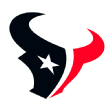
Houston Texans
The Texans have more than $56 million of cap space, and they need to spend most of it to fill holes on both sides of the ball. Houston doesn't have a first- or second-round pick in the draft, so the team will need to address its glaring needs along the offensive line and in the secondary through free agency. The Texans might not have to spend much to keep any of their own players, so expect most of it to go to external options. -- Sarah Barshop

Minnesota Vikings
Talent like Kirk Cousins doesn't hit the open market all that often. The Vikings need to shoot their shot to land the quarterback, but even if they get outbid, they'll need to play their cards right with Case Keenum, Teddy Bridgewater or Sam Bradford and work out a deal to re-sign one (or more). With roughly $57 million in available cap space, the Vikings can be as aggressive as they want when looking for a quarterback. But that money will quickly diminish once they sign one and start thinking about extensions for players such as linebacker Anthony Barr, receiver Stefon Diggs and others who come due a year from now. As general manager Rick Spielman said, Minnesota has been planning its cap space for this offseason for the past two years. The Vikings will be prudent in ensuring the decisions made over the next few months help them maintain success on the field and don't put them in a bind financially. -- Courtney Cronin

New York Jets
The Jets have more than $70 million in cap room and a 5-11 roster, so the game plan is clear. A chunk of the money could go to Kirk Cousins, their No. 1 target, but it wouldn't be a surprise if they show interest in top cornerbacks Trumaine Johnson and Malcolm Butler. Their philosophy is to build through the draft -- they own the sixth overall pick -- but they have too many needs to let the cap money burn a hole in their pocket. -- Rich Cimini

San Francisco 49ers
The Niners will be "aggressively prudent," as general manager John Lynch likes to call it. They already set the tone for the offseason by signing quarterback Jimmy Garoppolo to a mega-contract paying him more money in terms of annual value than any player in NFL history. That alone should land them in the "aggressive" category, but it would be foolish to think their work here is done. Even with Garoppolo under contract, the Niners still figure to have somewhere between $60 million and $70 million in cap space, depending on what the final number turns out to be. With holes at cornerback, edge rusher, the interior of the offensive line, wide receiver and possibly running back, there's reason to believe the 49ers won't hesitate to pursue players they think are worth adding to the mix, even if they're expensive. As a team that suddenly looks like it could be back in the postseason hunt, filling important needs will be a priority. -- Nick Wagoner
2: Active, but not breaking the bank

Arizona Cardinals
The Cardinals would have fallen under "aggressive," but they currently have only about $22 million in cap space, allowing them to be active but not too aggressive. If the Cardinals open up more cap room, they could be aggressive in free agency to start molding the roster to new head coach Steve Wilks' liking. Wilks already has said the Cardinals will be "very aggressive" this offseason when it comes to finding a quarterback, whether it's through free agency, a trade or the draft (Arizona currently has no QBs under contract for the 2018 season). As for the rest of the roster, the Cardinals will be active in trying to fill holes at wide receiver and cornerback. -- Josh Weinfuss

Atlanta Falcons
The Falcons probably won't overspend, but they'll look to plug some holes on both lines while possibly looking into adding more targets for quarterback Matt Ryan. The one position to keep an eye on is guard. General manager Thomas Dimitroff implied the Falcons could be better suited to target that position in free agency rather than the draft after seeing the success they had in landing Pro Bowl center Alex Mack. The Falcons need to solidify the interior of the line next to Mack with a bona fide starter, or perhaps two, based on left guard Andy Levitre's health. -- Vaughn McClure

Baltimore Ravens
All indications point to the Ravens not being as active as fans might hope because Baltimore is projected to have only $10 million in cap space, which ranks among the worst in the NFL. But owner Steve Bisciotti said last month he isn't worried about the current cap situation and that the Ravens can "make a splash" after restructuring contracts. A priority for Baltimore is upgrading the targets for quarterback Joe Flacco. That means adding a wide receiver and tight end to help improve the NFL's No. 29 passing offense. -- Jamison Hensley

Buffalo Bills
The Bills were more active than expected last offseason, signing safeties Micah Hyde and Jordan Poyer to multiyear deals and seeing instant results. Their cap situation this March will depend on whether quarterback Tyrod Taylor is kept, traded or released, but there is a potential for Buffalo to have $40 million or more in cap space. Part of that amount could go toward retaining core defensive players such as defensive tackle Kyle Williams and linebacker Preston Brown, but there should be some room left for adding a lower-cost veteran quarterback (if Taylor is gone). The Bills already signed veteran cornerback Vontae Davis, meaning starting cornerback E.J. Gaines is likely to sign elsewhere as a free agent. -- Mike Rodak

Carolina Panthers
The Panthers would like to re-sign a few of their own free agents, but they won't break the bank to do it. Guard Andrew Norwell and defensive tackle Star Lotulelei likely would be bank breakers, so look for them to at least test the market and likely move on. Re-signing defensive end Julius Peppers, kicker Graham Gano and possibly tight end Ed Dickson will be a priority. The team will look to find quality depth at wide receiver and guard if the price is right. -- David Newton

Chicago Bears
The Bears have more than $50 million in salary-cap space, and that number is expected to climb once they release certain veterans before the league year begins. But general manager Ryan Pace has said on multiple occasions that he's committed more to building through the draft. Pace has spent $141 million in guaranteed money since 2015 -- the fourth-highest total in the NFL -- but Chicago typically doesn't break the bank on free agents in March. The Bears are expected to target cornerback, wide receiver and pass-rusher when free agency opens. -- Jeff Dickerson

Green Bay Packers
The Packers will be active without breaking the bank. At least that's the vibe from new general manager Brian Gutekunst, who replaced the free-agent averse Ted Thompson. Although Gutekunst worked under Thompson and has a deep background as a college scout, he knows the holes in this roster can't all be plugged through the draft. In fact, he called free agency "an absolute must as an accessory piece" to roster building. It won't be the main building block, but when he says he doesn't want to be "afraid" of free agency, he sounds like he means it. Ideally, the Packers would add a pass-rusher (or two) in free agency, so they don't have to rely solely on the draft to fill their biggest need. -- Rob Demovsky
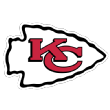
Kansas City Chiefs
Thanks to some of their recent moves, including the trade of quarterback Alex Smith to Washington and cornerback Marcus Peters to the Rams, the Chiefs should have about $20 million to spend when the league year begins. While that total won't allow the Chiefs to win many bidding wars, they can be effective at lower levels in filling some holes on their roster. Kansas City could use pass-rushing help and a veteran to back up Patrick Mahomes II, among other needs. -- Adam Teicher
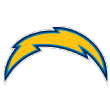
Los Angeles Chargers
General manager Tom Telesco believes in building his team through the draft and using free agency to fill specific needs on the 53-man roster. This offseason should be no different. Traditionally, Telesco focuses on re-signing his own pending free agents first before eyeing players from other teams. However, the Chargers have a glaring need at kicker, and that should be the top priority for Telesco heading into free agency. -- Eric D. Williams

Los Angeles Rams
The Rams addressed a major need at a minimal cost when they agreed to acquire shutdown cornerback Marcus Peters from the Chiefs, a move that changed the dynamic of their entire offseason. They're now projected at just under $40 million in salary-cap space, and a lot of that money will probably be allocated to their own players. Defensive back Lamarcus Joyner and wide receiver Sammy Watkins are pending free agents, and the Rams would like to bring them both back. Defensive tackle Aaron Donald is headed into the final year of his rookie contract and will eventually command a salary in line with the game's highest-paid defensive players. If the Rams venture into the open market, they'll be looking mostly at edge rushers and bigger guys inside, either at nose tackle or inside linebacker, who can help them improve against the run. They might get more secondary help, too. -- Alden Gonzalez

New England Patriots
The Patriots will always pick their spots, but after taking the plunge on the first day of free agency last year with a high-end, five-year, $65 million contract for cornerback Stephon Gilmore, it's hard to imagine the team breaking the bank again in 2018. The salary cap shouldn't be an impediment to any moves the team hopes to make. Given how often the Patriots are in sub packages, a safety such as the Saints' Kenny Vaccaro could possibly pique their interest if the price is right. But more than anything, retaining their own free agents -- starting with left tackle Nate Solder and running back Dion Lewis -- seems like a sound strategy. -- Mike Reiss

New York Giants
The Giants won't be among the most aggressive teams this year. They don't have anywhere near the most money to spend. They will, however, be active in the offensive line market, where they should open their wallets to land a significant player or two. They have no choice. The Giants don't have much currently under contract, and new general manager Dave Gettleman and coach Pat Shurmur have vowed to fix the offensive line. Some of the major work has to be done in free agency, especially with arguably the Giants' three best linemen -- Justin Pugh, Weston Richburg and D.J. Fluker -- on the market. -- Jordan Raanan

New Orleans Saints
The Saints are always active in free agency, and this year should be no different. They should have around $15 million in cap space even after a new deal with quarterback Drew Brees is completed (depending on how it's structured). The Saints rarely go after the most expensive tier of blockbuster free agents, but expect something similar to last year when they spent big on one high-end guy (guard Larry Warford at $8.5 million per year), then found a handful of other key players in the second and third tiers (A.J. Klein, Ted Ginn Jr., Alex Okafor, Manti Te'o, etc.). -- Mike Triplett

Oakland Raiders
This comes with a caveat. The Raiders are estimated to have more than $19.5 million in cap space, need to sign defensive end Khalil Mack to a rich contract extension this offseason, and could free up an additional $30 million-plus by parting ways with running back Marshawn Lynch ($5.95 million), wide receiver Michael Crabtree ($7.68 million), linebacker Bruce Irvin ($8.25 million) and cornerback Sean Smith ($8.5 million). As such, Oakland's activity in free agency is seemingly tied to how many players the Raiders choose to move on from, and balancing the money saved with money paid to said free agents. As new coach Jon Gruden told the East Bay Times, "We've really focused on some specific free agents that will be available when free agency begins. It's been a grind." And that's not taking into account Oakland's own free agents it would want to retain, such as linebacker NaVorro Bowman, cornerback TJ Carrie and defensive linemen Denico Autry and Justin Ellis. -- Paul Gutierrez

Seattle Seahawks
We can expect the Seahawks to be active in free agency because that's how they've always operated under general manager John Schneider, even when they haven't made major splashes. Last year, for instance, Seattle signed a handful of unrestricted free agents to one-year deals and only one of them -- guard Luke Joeckel -- got more than $3 million guaranteed. With several holes to fill and not a ton of money to work with, the team's approach could be similar this offseason. The Seahawks are projected to have around $14 million in cap space as it stands now and could clear at least $10 million more by releasing cornerback Jeremy Lane and defensive end Cliff Avril. They won't have much left over if they re-sign defensive tackle Sheldon Richardson and safety Bradley McDougald, maybe their two most important unrestricted free agents. Look for the Seahawks to scour free agency for bargains at defensive end, offensive guard/tackle, strongside linebacker and kicker. -- Brady Henderson
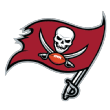
Tampa Bay Buccaneers
The Bucs have the fifth-most cap space in the league this offseason. But they have to prepare for a big long-term contract for wide receiver Mike Evans, and later, quarterback Jameis Winston. Center Ali Marpet looks poised to collect a nice deal too. It would still leave enough to sign a quality pass-rusher, but at the right price. One thing to keep in mind is that big free-agent signings with four-plus-year deals have not boded well for the Bucs in recent years (Michael Johnson, Anthony Collins, Bruce Carter). Whomever they bring in from the outside, they need to vet more carefully. -- Jenna Laine
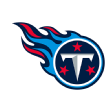
Tennessee Titans
The Titans have around $50 million in cap space, but I expect them to make several moves to find the right players at the right prices, rather than make one or two elite free-agency splashes. General manager Jon Robinson has had success with midlevel signings such as receiver Rishard Matthews, cornerback Logan Ryan and center Ben Jones. I'd expect a similar plan this offseason, seeking additions at receiver, running back, defensive back, guard and linebacker. The Titans do have to shell out some money to their own players -- left tackle Taylor Lewan, for example -- and could choose to re-sign others such as linebacker Avery Williamson, guard Josh Kline or defensive end DaQuan Jones. -- Cameron Wolfe

Washington Redskins
The Redskins will go after some prime free agents -- they showed interest in top guys last year as well -- but they also will be restrained. The sign-at-all-costs mentality no longer exists at Redskins Park. But names to watch include receiver Paul Richardson or defensive linemen Bennie Logan and Dontari Poe. Washington was active on the first day of free agency last season with multiple signings, but none were considered splashy. The Redskins have 17 unrestricted free agents and will try to retain some key players, such as linebacker Zach Brown, but they do have a limit (which is why Brown remains without a long-term deal). Linebacker Trent Murphy will be a priority to re-sign as well. -- John Keim
3: Not as active as fans might hope

Cincinnati Bengals
The Bengals have never been very aggressive in free agency, and after receiving four compensatory picks in this year's draft, it would be very surprising to see them suddenly shift philosophy now. Cincinnati usually signs a free agent or two but never goes after the big fish in the early days of the signing period. -- Katherine Terrell

Dallas Cowboys
This has been the Cowboys' approach for the past few years, much to the fans' chagrin. But executive vice president Stephen Jones believes average players get paid like great players in free agency. The Cowboys can create plenty of cap room to make splashes, but they have not done that since signing cornerback Brandon Carr in 2012. They'll look to keep their own, such as defensive end DeMarcus Lawrence and linebacker Anthony Hitchens, while working on a long-term deal for guard Zack Martin. Those would be their splash signings, but they need to work more than just the edges in free agency to improve the roster. -- Todd Archer

Detroit Lions
This is probably a combination of active but not supremely active. General manager Bob Quinn has shown he is willing to go after free agents and make what he considers strategic moves with his money. The Lions already made their first big decision, franchising their own big-ticket free agent, defensive end Ezekiel Ansah. Detroit does have money to spend, and Quinn could have some big targets in mind (he has been aggressive in targeting positions of need in his first two offseasons by signing receiver Marvin Jones, guard T.J. Lang and offensive tackle Rick Wagner). But this year Quinn might not have to be as aggressive, continuing to focus on areas of improvement and building depth instead of trying to sign the biggest names possible. -- Michael Rothstein
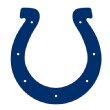
Indianapolis Colts
The Colts will have around $79 million in cap space to address their offensive line, pass rush, receiver and running back needs. General manager Chris Ballard already has said they won't break the bank. His focus is building the roster through the draft. If the Colts do spend on free agents, you can expect it to be on a player who is still relatively young with a strong upside. The days of overspending on players on the decline -- as was the case under former general manager Ryan Grigson -- are over in Indianapolis with Ballard making the decisions. "We won't pay a mid-tier player [top-tier] money," Ballard said. -- Mike Wells
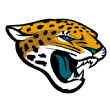
Jacksonville Jaguars
Now that the Jaguars have signed quarterback Blake Bortles to an extension, the attention turns to re-signing wide receiver Allen Robinson. After that, however, the Jaguars won't be the big-time players they have been in free agency over the past three seasons. They have every piece in place on defense, so a depth player or two could be signed. Tight end and guard are the big needs on offense, but the Jaguars can afford to be picky there, especially because it's supposed to be a good draft at those positions. Don't expect the Jaguars to shell out big money this March. -- Mike DiRocco

Philadelphia Eagles
This is a deep Super Bowl roster, so fans shouldn't be let down if there isn't a lot of movement. The Eagles are projected to be about $9 million over the cap, so the champs certainly aren't in a position to go splash-crazy -- and they don't need to. But the term "stand pat" is not in executive vice president of football operations Howie Roseman's vocabulary. First up, the front office needs to decide what to do with pending free agents such as linebacker Nigel Bradham, cornerback Patrick Robinson and running backs LeGarrette Blount and Darren Sproles. Once that business is tended to, look for the Eagles to find creative ways to tweak their roster. They might not be aggressive on Day 1 when the big-money signings go down, but will likely be heard from before long. -- Tim McManus

Pittsburgh Steelers
This is a borderline rating 4. The Steelers project to have around $6 million in cap space, which they will need to re-sign running back Le'Veon Bell and maybe grab a veteran inside linebacker or safety. They simply don't have the money to drop serious coin. Consider this: The Steelers had twice that amount last year and their biggest free-agent signing was defensive end Tyson Alualu at two years, $6 million. Pittsburgh is not a major player in March. The team prefers developing its own talent. -- Jeremy Fowler
4: Standing pat

Miami Dolphins
The Dolphins simply do not have money to spend. They will enter the new league year $8.6 million over the salary cap after placing the franchise tag on wide receiver Jarvis Landry. Miami needs help at linebacker and along the offensive line, but will need to cut players to open up some cap room. Tight end Julius Thomas and linebacker Lawrence Timmons are reportedly on the chopping block. -- ESPN.com
